Having The Perfect Arranged Living Room Furniture Is Everyone’s Ultimate Goal. It Should Be Comfortable, Inviting, And Well-arranged With Furniture That Fits Your Lifestyle. Arranging The Furniture In Your Living Room Can Be Challenging And Time Consuming, But It Doesn’t Have To Be. With Some Tips And Tricks, You Can Easily Create A Space That Will Fit Your Needs While Also Making Sure The Furniture Looks Great. This Article Outlines How To Arrange Living Furniture To Ensure You Get The Look You Desire.
1. Take A Look At Popular Furniture Arrangements
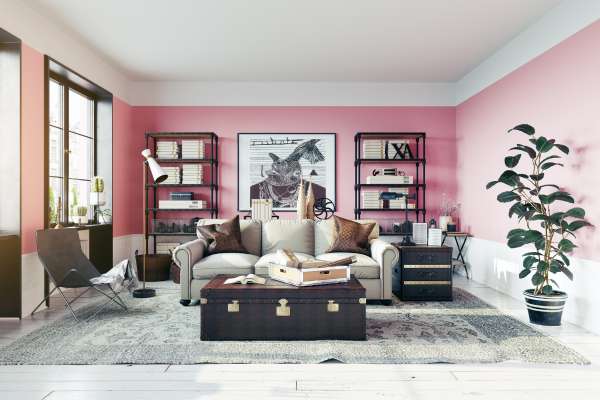
Arranging Living Room Furniture Can Be A Tricky Task, Especially If You’re Not Sure Where To Start. It’s Easy To Feel Overwhelmed By The Variety Of Layouts And Styles Available. However, By Taking A Look At Some Popular Arrangements, You Can Get Inspiration For Your Own Space.
One Popular Furniture Arrangement Is The “conversational” Layout. This Involves Placing Sofas And Chairs Facing Each Other In A Circle, Allowing Everyone To Easily Engage In Conversation. Another Common Arrangement Is The “l-shaped” Layout, Where One Sofa Is Positioned Perpendicular To Another, Creating An L-shape In The Room. This Works Particularly Well For Smaller Spaces As It Maximizes Seating While Still Leaving Enough Floor Space To Move Around.
This Setup Involves Placing One Sofa Perpendicular To Another, Forming An “l” Shape. It’s Ideal For Larger Living Or Open-concept Spaces, As It Can Help Define Different Areas Within The Room. For Example, You Could Use One Side Of The “l” For Conversation And Entertainment, While The Other Side Serves As A Reading Nook Or Workspace.
2. Begin With The Couch

The Living Room Is The Heart Of Any Home, And Arranging Furniture In This Space Can Be A Daunting Task. However, There Is One Key Piece That Should Always Serve As The Starting Point For Your Design: The Couch. The Couch Is Not Only Usually The Largest Piece Of Furniture In The Living But Also Serves As A Central Focal Point For The Entire Space. Therefore, It’s Essential To Start By Positioning It Properly.
Begin With The Couch As The Focal Point Of Your Living. It’s Important To Choose A Couch That’s Comfortable But Also Visually Pleasing. You Want It To Be Inviting For Guests To Sit On But Not Too Overpowering In Size Or Style. Once You Have Selected The Perfect Couch, You Can Then Arrange Additional Furniture Around It, Such As Armchairs And Coffee Tables.
Consider The Flow Of Traffic In The Room When Placing Each Piece Of Furniture. You Want To Create A Layout That Feels Natural And Allows People To Move Around Comfortably Without Feeling Cramped Or Restricted.
3. Pick A Focus Point
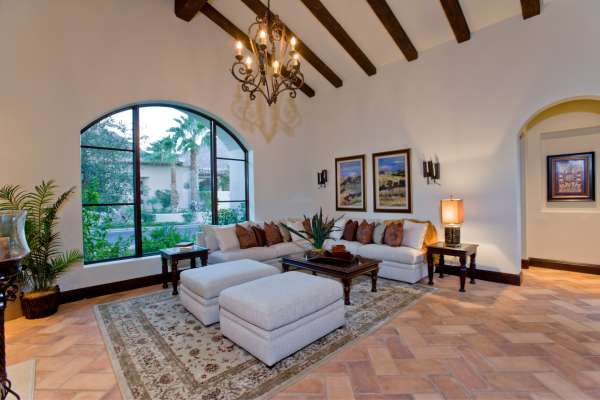
When It Comes To Arrange Living Room Furniture, One Of The Most Important Aspects Is Picking A Focus Point. This Will Help You Determine Where To Place Your Sofa, Chairs And Other Furniture Items. A Focus Point Can Be Anything From A Fireplace To A Tv Or Even A Beautiful View Outside.
Once You Have Identified Your Focus Point, Arrange Your Furniture In Relation To It. For Example, If Your Tv Is The Main Attraction, Consider Placing Your Sofa Directly Across From It So That Everyone Has An Unobstructed View. On The Other Hand, If You Have A Beautiful Window With Stunning Views Outside, Position Your Seating Towards This Feature Instead.
There Are Several Different Elements You Can Choose As Your Focus Point, Depending On Your Personal Style And The Layout Of Your Room. A Fireplace Or Large Window With A Scenic View Can Make For An Excellent Focal Point. Alternatively, You Could Opt For A Piece Of Artwork Or Even A Statement Piece Of Furniture Like An Accent Chair Or Coffee Table.
4. Avoid Placing Furniture In The Way Of The Walls

Arranging Furniture In Your Living Room Can Be A Challenging Task, But It’s Essential To Ensure That You Create A Comfortable And Functional Space. Placing Them Too Close To The Walls Is One Of The Most Common Mistakes. While This May Seem Like A Logical Choice, It Can Actually Hinder The Flow Of Your Room And Make It Feel Cramped.
By Pulling Pieces Away From The Walls, You Create A Cozier Atmosphere That Encourages Conversation And Socializing. This Type Of Arrangement Also Allows For Better Traffic Flow Throughout The Room, Making It Easier To Move Around Without Bumping Into Furniture. Additionally, It Can Help Define Different Zones Within The Space, Such As Creating A Designated Reading Nook Or Entertainment Area.
This Can Make It Difficult For People To Move Freely Around The Room And Interact With Each Other Comfortably. Instead Of Pushing All Your Furniture Against The Walls, Try Pulling Them Away Slightly To Create Some Breathing Room. This Will Not Only Help Improve The Flow Of Your Living But Also Give Off An Illusion Of More Space.
5. Decide Television Situation
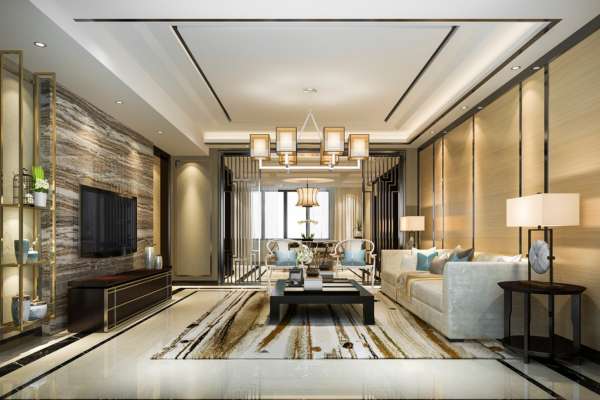
The Tv Is Often Considered The Centerpiece Of The Living Room And Dictates How Other Furniture Should Be Arranged. Whether You’re Starting From Scratch Or Trying To Update Your Current Setup, There Are A Few Key Factors To Consider When Deciding On Your Television Situation.
Consider The Size And Placement Of Your Television. If You Have A Big Screen, You Should Make Sure That Everyone In The Room Can See It. In Addition, Think About Where You’ll Be Sitting When Watching Tv – This Will Help Determine How High Up Or Low Down You Should Mount Your Tv Or Place It On A Stand. Once You’ve Determined Where Your Tv Will Go, Rearrange Other Furniture Around It So That Everyone Has A Comfortable View.
6. Create Areas For Conversation
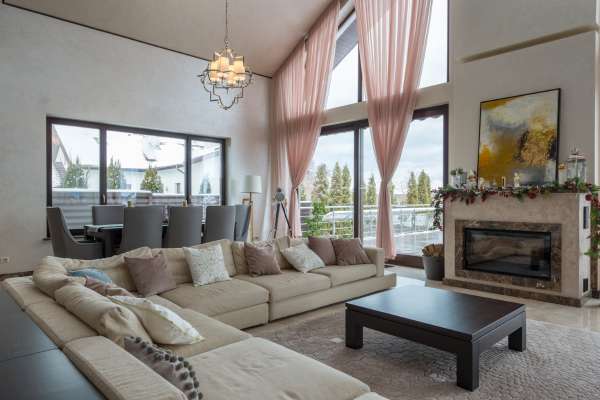
After All, The Living Room Is Often The Place Where Family Members And Friends Gather Together To Socialize And Catch Up. By Creating Areas For Conversation, You Can Ensure That Everyone Feels Comfortable And Engaged.
One Way To Create Areas For Conversation Is By Arranging Your Furniture In A Circular Or Semi-circular Formation. This Allows People To Face Each Other Easily And Encourages More Natural Communication. Another Option Is To Group Furniture Pieces Together In Smaller Clusters Throughout The Room. For Example, You Could Place Two Armchairs Facing A Sofa With A Coffee Table In Between Them.
In Addition To Furniture Arrangement, Consider Adding Some Extra Elements That Will Help Set The Tone For Conversation. Soft Lighting Can Be Especially Effective Here – Think Table Lamps Or Floor Lamps With Warm Bulbs That Give Off A Cozy Glow.
7. When Arranging Furniture, Seek Equilibrium

The Furniture Layout Can Make Or Break The Overall Ambiance Of Your Space. When You’re Arranging Living Room Furniture, Seeking Equilibrium Is Crucial For Achieving A Harmonious Balance.
Start By Assessing Your Living Layout And Identifying The Focal Point Of The Room. This Could Be A Fireplace Or A Large Window With A View. Then, Arrange Your Furniture Around This Central Point, Keeping In Mind The Traffic Flow Through The Space. You Don’t Want To Create Any Obstacles Or Make It Difficult For People To Move Around Freely.
One Way To Achieve Equilibrium In Your Living Is By Creating A Focal Point. A Focal Point Draws Attention And Creates A Sense Of Balance In The Space. This Could Be Anything From A Fireplace To An Art Piece Or Even A Wall-mounted Tv. Once You Have Identified The Focal Point, Arrange Your Seating Around It In A Way That Allows Everyone To Comfortably View It While Still Feeling Connected To Each Other.
Another Important Consideration When Arranging Living Furniture Is Traffic Flow. You Don’t Want People Tripping Over Each Other As They Move Around The Space! To Ensure Easy Movement, Leave Enough Clearance Between Furniture Pieces And Create Natural Pathways Throughout The Room.
8. Consider The Flow Of Traffic

Arranging Living Room Furniture Is Crucial To Creating A Comfortable And Functional Space. One Of The Most Important Factors To Consider When Arranging Yours Is The Flow Of Traffic. This Refers To How People Move Through Their Lives And Interact With Each Other.
Think About Where People Are Likely To Enter And Exit The Room. If You Have A Dedicated Entryway, This Will Be Easy – Simply Arrange You’re So That It Faces The Entryway Rather Than Blocking It Off. If There Isn’t A Clear Entryway. Try To Imagine Where People Will Naturally Want To Walk Through The Space And Plan Accordingly. You’ll Also Want To Make Sure That There’s Plenty Of Space For People To Move Around Each Piece Of Furniture Without Feeling Cramped Or Uncomfortable.
Mapping Out The Different Areas Of Your Living Room And Identifying Where People Are Likely To Walk Through. This Could Be From The Entrance Door Or Towards A Certain Area Such As A Tv Stand Or Fireplace. Once You Have Identified These Areas, Arrange The Furniture In A Way That Does Not Block These Pathways.
9. Use The Right-sized Rugs
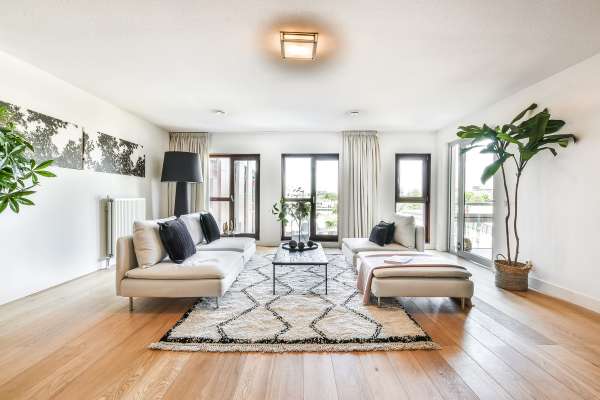
The Size Of The Rug You Choose For Your Living Room Can Make Or Break The Entire Look And Feel Of The Space. Not Only Must It Be Appealing From A Visual Perspective, But It Also Needs To Be Useful. Choosing The Correct Size Rug Can Help Anchor Your Furniture In Place And Create A Cohesive Flow Throughout The Room.
One Common Mistake That People Often Make When Arranging Their Living Is Selecting A Rug That Is Too Small. This Creates An Unbalanced Look Where It Appears To Be Floating In The Middle Of The Room. To Avoid This Issue, Select A Rug That Is Large Enough For All Of Your Furniture To Fit Comfortably On Top With Enough Space Around The Edges.
Before You Start Shopping For A Rug, Take Note Of The Dimensions Of Your Living Room And Determine How Much Floor Space You Want To Cover. If You Have A Large Living Area, Consider Choosing An Oversized Rug. This Helps Anchor Your Furniture And Creates A Cozy Atmosphere In The Room. On The Other Hand, If You Have Limited Space In Your Living Room, Choose A Smaller Sized Rug To Avoid Making The Area Feel Cramped.
10. Buy A Substantial Coffee Table

From Sofas And Armchairs To Tv Stands And Shelving Units, Every Element Plays An Important Role In Creating A Comfortable And Functional Space. But One Piece That Often Gets Overlooked Is The Coffee Table. A Substantial Coffee Table Can Make All The Difference In Your Living Layout.
A Larger Coffee Table Provides More Surface Area For Drinks, Snacks, And Decor. This Means You’ll Have Plenty Of Space To Entertain Guests Or Simply Relax With A Book Or Magazine. Plus, When You’re Not Using The Table For Its Intended Purpose, It Can Double As Extra Seating During Parties Or Gatherings.
Secondly, A Bigger Coffee Table Can Help Anchor Your Living Design. If You Have High Ceilings Or Large Windows That Make Your Furniture Feel Dwarfed, Adding A Substantial Coffee Table Can Bring Everything Into Balance.
11. Place The Table Arm’s Length Apart
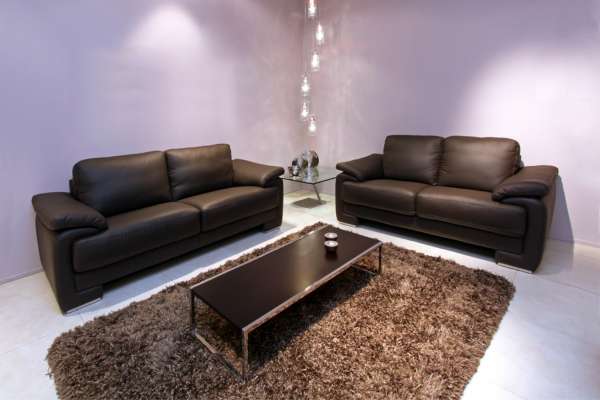
Arranging Your Living Room Furniture Can Be A Challenging Task, But It’s Crucial To Get It Right. Placement Can Affect The Overall Aesthetics Of Your Living And Impact How Comfortable You Feel In The Space. One Of The Most Essential Things To Consider When Arranging Your Furniture Is Ensuring That The Table Is At Arm’s Length Apart.
Placing Tables At Arm’s Length Apart Creates An Optimal Distance For Conversation And Movement In Your Living. This Spacing Allows You To Have A Relaxed Conversation With Guests Without Having To Shout Or Strain Your Voice. It Also Makes It Easy For People To Move Around The Sitting Area While Enjoying Each Other’s Company.
In Addition, Placing Tables At Arm’s Length Apart Gives You Enough Space To Put Down Drinks Or Snacks Without Having Them Too Close Together, Which Could Result In Spills Or Accidents.
12. Let Light Shine

A Well-arranged Living Room Can Make All The Difference In Your Home’s Appearance. Whether It Is A Small Apartment Or A Large Family Home, The Furniture Arrangement Is Critical To Creating An Inviting And Comfortable Space. Properly Arranged Can Transform A Cluttered Or Cramped Area Into A Cozy And Welcoming Retreat.
Your Living Room Is Where You Spend Most Of Your Leisure Time, Whether It’s Relaxing With A Book Or Entertaining Guests. However, The Lighting In Your Space Can Have A Huge Impact On How Enjoyable Your Experience Is. By Arranging Yours To Maximize Natural Light And Strategically Placing Lamps And Other Lighting Fixtures. You Can Create An Inviting Atmosphere That Will Make You Want To Spend More Time In This Important Area Of Your Home.
One Easy Way To Let Light Shine Into Your Living Room Is By Rearranging The Furniture. Move Sofas And Chairs Away From Windows Or Doors That Block Natural Light, And Arrange Them Along Walls Where They Won’t Obstruct Views Outside. Consider Using Lightweight Curtains Or Blinds That Allow Sunlight To Filter Through While Still Providing Privacy When Needed.
13. Use Artwork That Is Right-sized

Artwork Can Have A Significant Impact On The Overall Feel And Aesthetic Of Your Space. But It’s Essential To Select Pieces That Are Appropriately Sized For Your Room. The Wrong-sized Art Can Throw Off The Balance And Make Your Space Feel Cluttered Or Empty.
To Choose The Right-sized Artwork For Your Living Room, Start By Measuring The Available Wall Space. Consider How Much Furniture You Have In The Room And Where It’s Placed. You’ll Want To Choose A Piece Or Collection That Complements Rather Than Competes With Your Arrangement. For Instance, If You Have A Bold-colored Sofa, Consider Choosing Art With Complementary Colors Or Muted Tones That Won’t Distract From Its Presence In The Room.
To Determine What Size Artwork Is Appropriate For Your Living, Take Into Consideration The Size Of Your Furniture And The Dimensions Of Your Walls. As A General Rule, Artwork Should Be About Two-thirds To Three-quarters The Width Of Your Sofa Or Seating Area. If You Have High Ceilings Or A Particularly Large Wall To Fill, Consider Grouping Multiple Pieces Together In A Gallery Wall Arrangement.
14. Assembling Everything
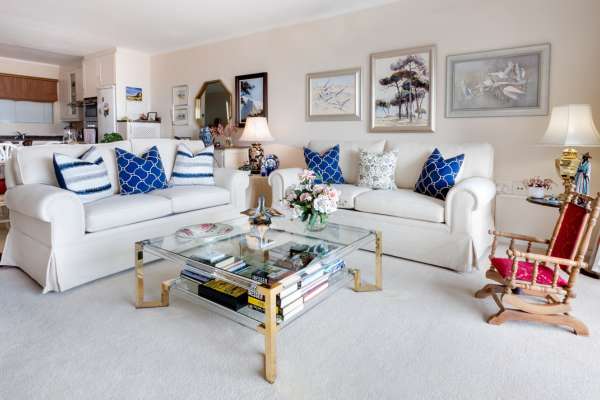
Assembling Everything Together In A Living Room Can Be Quite Daunting, Especially When It Comes To Arranging. With So Many Different Pieces To Choose From And So Many Ways To Set Them Up, It Can Be Overwhelming Trying To Create The Perfect Layout. However, With A Bit Of Planning And Creativity, You Can Turn Your Living Room Into A Space That Is Both Functional And Stylish.
Before Diving Into Any Major Rearranging, Take The Time To Measure Your Living Room And Sketch Out A Floor Plan. This Will Give You An Idea Of How Much Space You Have To Work With And Help You Visualize Different Layout Options. Once You Have An Idea Of Where Everything Will Go, Start By Placing The Largest Piece Of Furniture – Usually The Sofa – In Its Designated Spot. From there, Add Chairs Or Loveseats Around It In A Way That Makes Sense For Your Lifestyle. Choose Living Room Furniture
15. Clearly Defined Zones

Creating Clearly Defined Zones In Your Living Room Is An Excellent Way To Maximize The Functionality Of Your Space While Keeping It Visually Appealing. The Key To Achieving This Is To Arrange Yours In A Strategic Manner That Creates Distinct Areas For Different Activities. Such As Lounging, Entertaining, Or Working. Here Are Some Tips On How To Create Clearly Defined Zones In Your Living Room.
Start By Identifying The Primary Function Of Your Living And Choose A Focal Point Accordingly. This Could Be A Fireplace, A Window With A View, Or Even A Tv. Next, Group Furniture Pieces Around The Focal Point So That They Face Towards It And Create An Intimate Seating Arrangement. Then, Consider Adding Additional Seating Options Such As Accent Chairs Or Stools To Create Extra Seating Outside Of The Main Area. Lastly, Add Accessories Such As Rugs Or Curtains To Further Define Each Zone And Bring Cohesion Throughout The Space. Read More: Other Post
Conclusion
In Conclusion, Arrange Living Room Furniture Is An Important Task That Requires Time And Thought. It’s Essential To Consider The Size Of The Room, Purpose Of The Living Space, And How Often People Will Be Using It. Taking Measurements, Drawing A Floor Plan, And Arranging Pieces In An Open Concept Are All Key Steps To Achieving A Successful Design. Lastly, Don’t Be Afraid To Experiment With Different Arrangements Until You Find One That Fits Your Needs And Aesthetic.
